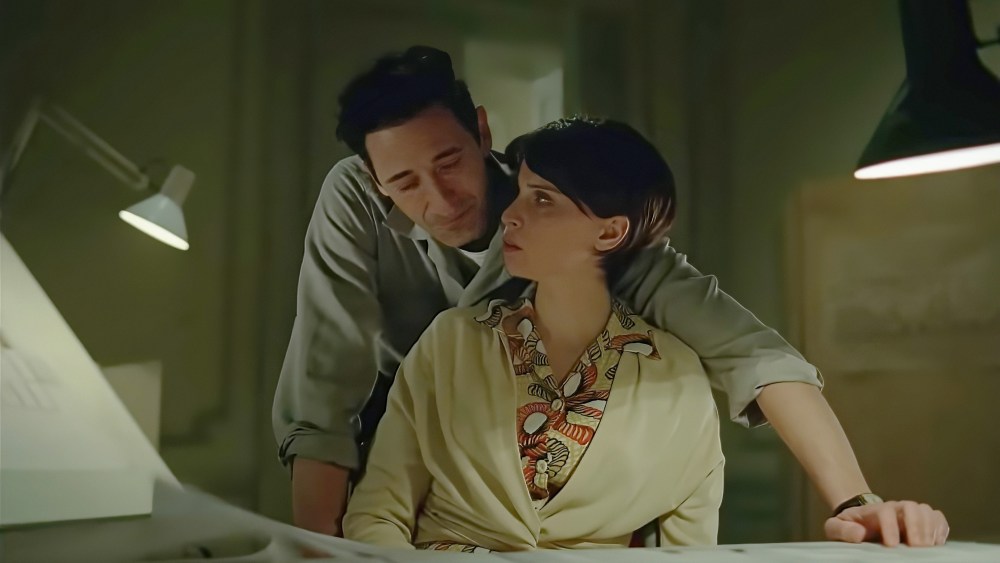The Rising Role of AI in Oscar Contenders: A Look at "The Brutalist" and Beyond
The film industry is buzzing with discussions about artificial intelligence (AI), especially following its headline-making role in the best picture contender "The Brutalist." This film has sparked not only excitement but also a significant debate about the ethical implications and artistic authenticity associated with using AI in filmmaking. However, "The Brutalist" isn’t alone on this front—other major films, including "A Complete Unknown," "Dune: Part 2," and "Emilia Pérez," have also incorporated AI technology, whether in big or subtle ways.
Award-Worthy Tech: AI Disclosure in the Academy Awards
Recognizing the growing prevalence of AI, the Motion Picture Academy is contemplating changes to its Oscars submission requirements. According to reports from Variety, there may be a push to make the disclosure of AI usage mandatory for the upcoming 2026 Oscars. While the Academy currently offers an optional disclosure form for AI usage, discussions among Governors and Branch executive committees suggest that this could soon change. The Academy’s SciTech Council is already working on the necessary language for these new rules, set to be unveiled in April.
AI in Visual Effects: The Next Big Thing
The application of AI in visual effects (VFX) is not new, yet it’s evolving at a rapid pace. Films up for recognition at this year’s Visual Effects Society Awards showcase AI-driven technologies, such as the Revize machine learning toolset from Australia’s Rising Sun Pictures. This innovative toolkit has been instrumental in achieving digital enhancements, including facial performance modifications and body replacements, across various high-profile projects, including "Furiosa" and "Sonic the Hedgehog 3."
For "Furiosa," Rising Sun utilized Revize to transition the character of Furiosa from childhood to adulthood across approximately 150 shots. The process involved finely tuning the digital re-creation of actor Anya Taylor-Joy’s features while maintaining the likeness of younger actress Alyla Browne. As Rising Sun’s machine learning supervisor Robert Beveridge explains, “It was a real fine balance of not introducing too many of [Taylor Joy’s] sharp adult features.”
A Spotlight on New Tech: Metaphysic and Others
AI startup Metaphysic has also garnered attention for its innovative tools, which have been used to age and de-age stars like Tom Hanks and Robin Wright in Robert Zemeckis’ "Here." Additionally, Metaphysic’s tech played a role in the creation of digital likenesses for characters in "Furiosa," showcasing the growing trend of resurrecting deceased actors in film.
Even more familiar tools are getting in on the action—popular software like Nuke features the CopyCat tool, which has been utilized in "Dune: Part 2" to replicate the striking blue eyes of the Fremen characters, saving countless hours in the editing room.
The Art of AI: Crafting Authentic Movie Experiences
For "The Brutalist," director Brady Corbet clarified that AI was used responsibly. The AI audio technology Respeecher was only applied in Hungarian language dialogues to enhance vowel clarity, ensuring that the actors’ performances remained authentic. Respeecher is similarly credited in "Emilia Pérez," emphasizing a trend where AI is thoughtfully integrated into the storytelling process while honoring the original work of human artists.
A seasoned VFX professional underlined a crucial point: "There should always be truthfulness… Awards decisions should be made knowing what the human artist did." This sentiment highlights the necessity of maintaining transparency in how films leverage AI technology.
Future Horizons: Collaboration in Creativity
While AI continues to revolutionize the film industry, it’s essential to keep the focus on collaborative storytelling. The integration of AI should complement human creativity, ensuring that the artistry behind film remains at the forefront. As one source eloquently put it, “It’s never been possible to get a great digital performance that wasn’t based on a human actor.”
This collaboration enhances the creative process, allowing filmmakers to push boundaries while honoring the contributions of every craft involved.
As the industry navigates this new landscape, it is clear that AI is here to stay, fundamentally altering how stories are told on screen. The tension between innovation and authenticity will continue to be a topic of discussion in the film community.
The AI Buzz Hub team is excited to see where these breakthroughs take us. Want to stay in the loop on all things AI? Subscribe to our newsletter or share this article with your fellow enthusiasts.




